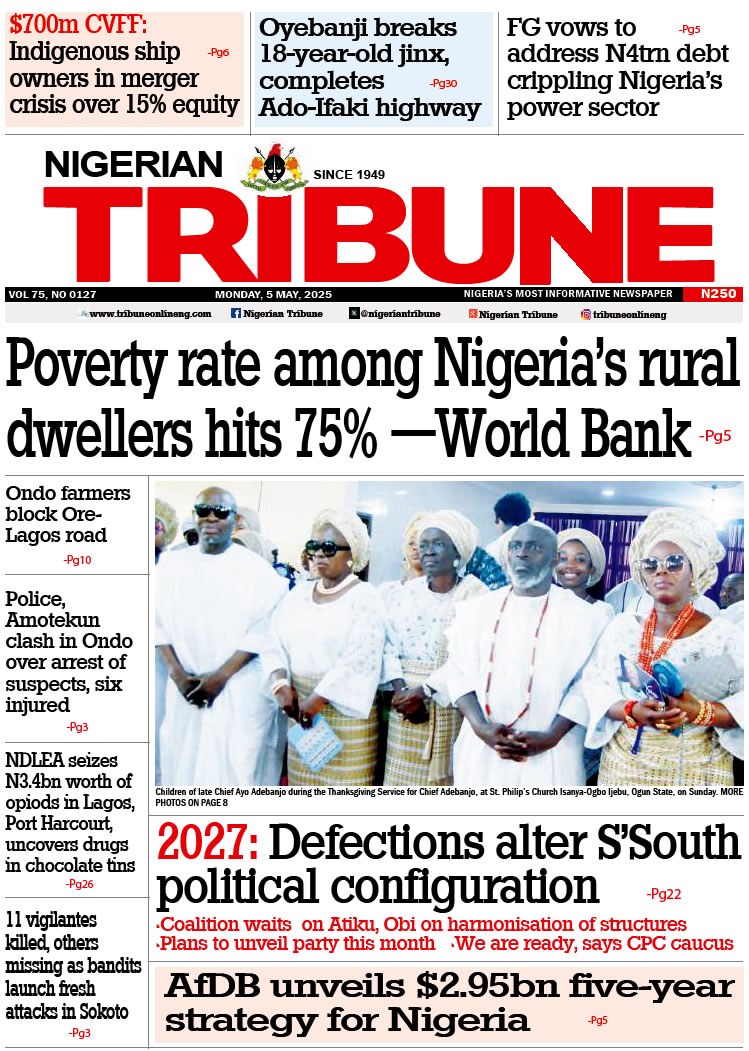Losses emanating from global catastrophes for the first half of 2023 were mostly without insurance cover and the resultant economic losses left huge liabilities for businesses and government alone to sort out without any risk mitigation.
This is contained in the half year report made available by insurer Aon and it disclosed that economic losses stemming from global natural disasters reached an estimated $194 billion in the period under review, indicating the fifth highest and the highest since 2011.
According to the report, the spike in global estimation showed that earthquakes in Turkey and Syria during the first quarter of 2023 were responsible for nearly half of the total economic losses, estimated at $91 billion.
It also became the deadliest global disaster since 2010 and the costliest in both countries’ modern histories.
As a result, economic losses in the EMEA region were unprecedented at $111 billion, exceeding the previous H1 record of $71 billion set in 1990.
According to Aon, the event showed that regulation and enforcement of modern building codes are of critical importance to prevent material losses and fatalities.
It added that despite the relatively strict and modern building codes currently in place in Turkey, structural integrity and performance varied in the affected regions, as many of the collapsed buildings were built relatively recently, with many total collapses of newly built multi-story residential buildings.
Head of Catastrophe Insight at Aon, Michal Lörinc said, “Despite the reality that communities globally remain at risk to catastrophes, only about 27 percent of economic losses this year have been insured. These devastating events reinforce the importance of resilience and the mitigation of risk, such as enforcing building codes, which was highlighted by the Turkey and Syria earthquakes.
“As we continue to face interconnected risks, we are focused on scaling risk mitigation and helping organisations make better decisions to close the global protection gap and enrich lives around the world.”
While the earthquake event was the costliest from an insurance perspective, severe convective storm activity in the US dominated global losses during this period.
In the first half of 2023, such storms were responsible for at least 13 individual billion-dollar events and $35 billion in total preliminary insured losses, setting a new H1 record.
The Aon report also reveals that this year’s economic losses of $194 billion already constitute 60 percent of the average annual global total.
Global insured losses from natural disaster events in H1 2023 were $53 billion, preliminarily 46 percent above the 21st Century average.
It adds that disaster costs continued to be affected by inflationary pressure, still persistent in many parts of the world, as well as other societal factors including demographics and wealth distribution that remain a major driver of financial loss.
YOU SHOULD NOT MISS THESE HEADLINES FROM NIGERIAN TRIBUNE
Full text: See Obi’s written address to Tinubu
Labour Party legal team, led by Livy Uzoukwu (SAN), on Thursday, filed their final written address in response…
46-year-old Nigerian ‘mysteriously’ dies in Scotland
Security and health experts in Glasgow, Scotland are battling to unravel the mystery surrounding the sudden death…
Nigerian billionaire businessman Tony Elumelu invited Wizkid as he organises a ‘sip and paint’ to celebrate…
Subsidy: 10 ways to reduce fuel consumption
Amidst the early days of President Bola Tinubu’s administration in Nigeria, the nation has been grappling with a staggering increase…
Messi scores on debut as Inter Miami wins league cup match
Argentine Superstar Lionel Messi scored on his debut for Major League Soccer side Inter Miami as they secured a victory…
RECENTLY, Nigeria has been facing an unprecedented scourge of diphtheria, and so soon after the onslaught of the COVID-19 pandemic…






